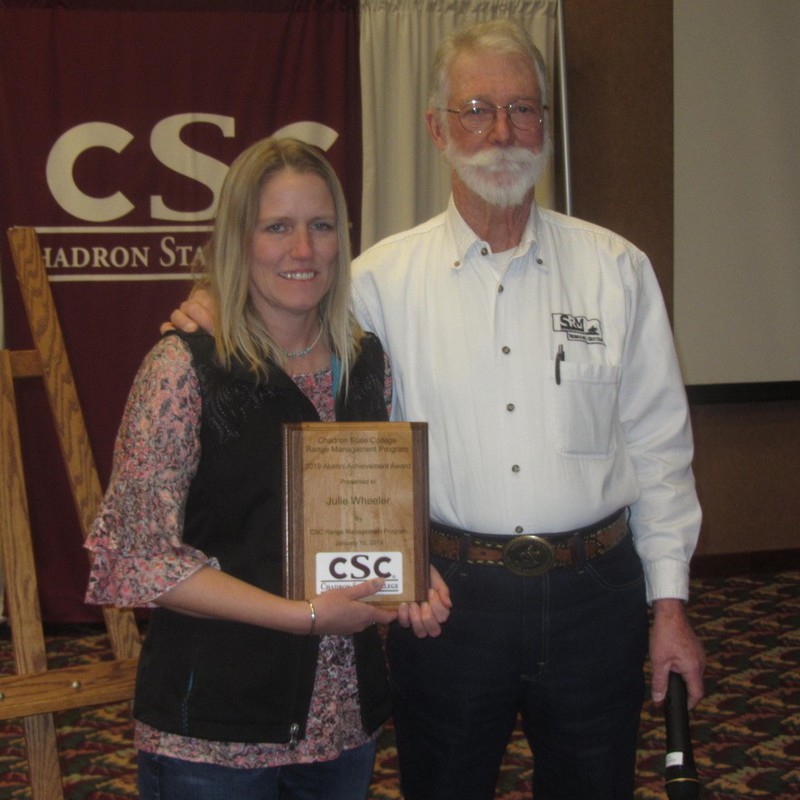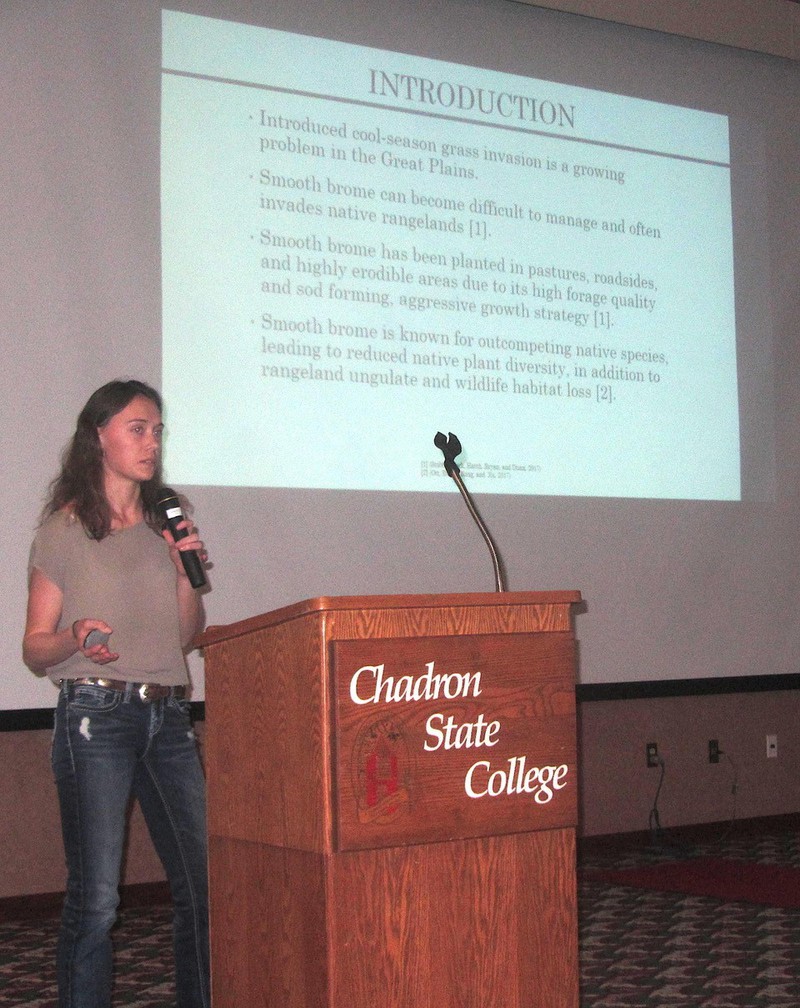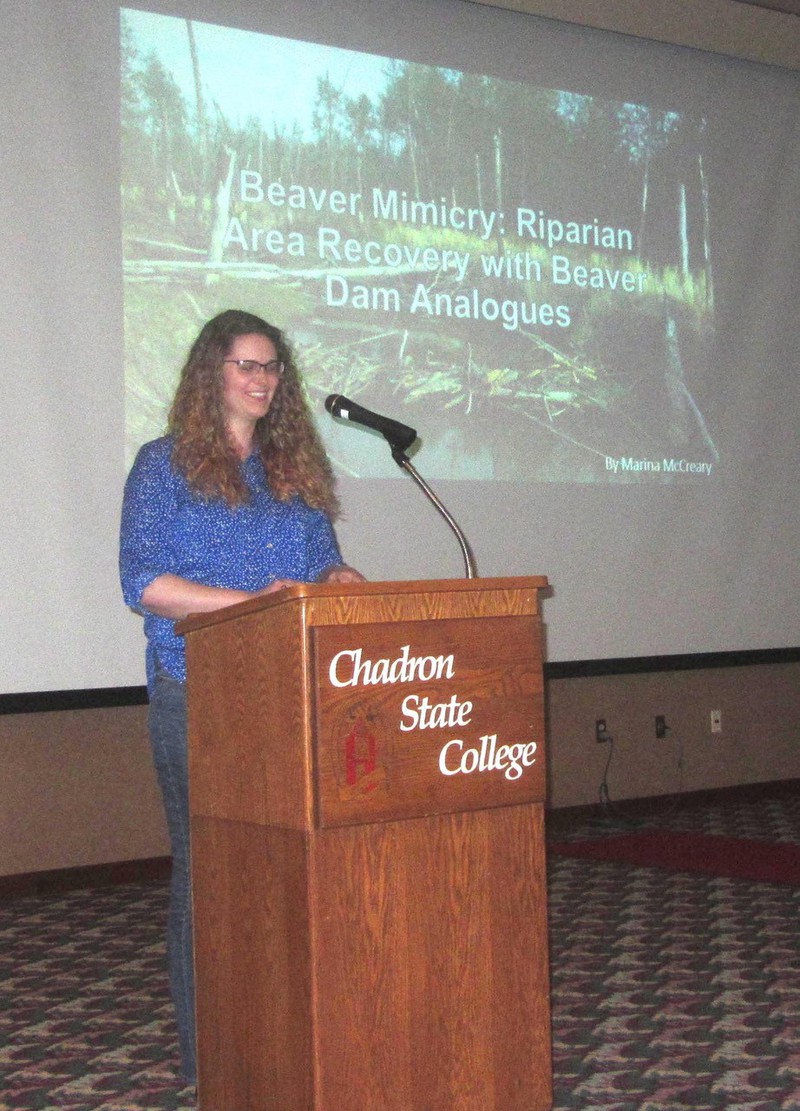Range Day audience hears of beneficial impacts from beavers

CHADRON – Though often targeted for elimination by landowners because of their habit of building dams in undesired locations, beavers can actually have beneficial effects on land used for grazing cattle.
That was one of the messages delivered to an audience of local ranchers, Chadron State College range management students, and representatives from several government agencies at the fourth annual Range Day, Tuesday, Jan. 19 at the CSC Student Center. A total of about 180 people attended the day-long event.
The event, a project of the Upper Niobrara White Natural Resources District, is sponsored in part by the CSC Rangeland Management program and the C.F. Coffee Gallery, with support from Bill and Virginia Coffee Family Foundation.
Range Day aims to give area ag producers ideas that can improve their operations and expose range management students to speakers from outside the academic realm, said Nevin Price, UNWNRD resource coordinator and event organizer.
“It’s great for students. They get to listen to speakers they might not otherwise get to hear in class,” said Price, a 2013 CSC range management graduate.
The program included presentation of the 2019 CSC Range Management Alumni Achievement Award to Julie Wheeler of Sundance, Wyoming. Wheeler was one of the first students in CSC’s range management program and her distinguished career with the Forest Service has led to her current job as rangeland management supervisor in two Ranger Districts of the Black Hills National Forest, said Jim O’Rourke, CSC emeritus professor, who presented the award.
“This school has been an important part of my life,” said Wheeler, who said that O’Rourke had steered her into the rangeland program when she was undecided on a major. “I’ve loved it. I got to meet people from all over the world. Rangeland has really been a passion for me.”
The audience heard Jim Griggs, manager of the Maggie Creek Ranch near Elko, Nevada, explain how restoring beaver populations has benefitted the ranch’s large cattle operation. After following the advice of a U.S. Fish and Wildlife Service biologist to create “riparian pastures” along the bed of what was an intermittent snow-melt fed creek, avoiding hot season grazing on those pastures, and allowing beaver to build their dams, the stream returned to a year round flow and once barren land along its path now produces substantial amounts of cattle forage, said Griggs.
“We now have green forage all the way across the floodplain. There are really phenomenal changes for us,” he said. “We trapped beaver to near extinction in Nevada…but (beavers) are as good for us as what you can spend truckloads of cash trying to do yourself.”
Support for the effects of beaver also came later in the day, in a presentation by CSC Range Management student Marina McCreary of Morrill, Nebraska, about her research project on using beaver dam analogues to improve riparian habitat and plant diversity. McCreary said her research indicates that placing temporary structures which act like beaver dams in a stream can be a cost effective way to increase water availability and create more varied and sustainable plant communities along waterways. As part of the on-going project McCreary is working with the U.S. Forest Service and Nebraska Game and Parks to find a suitable location in the area to test the idea.
Another student project featured at the meeting dealt with possible means of controlling smooth brome, a cold season forage grass that has spread widely across North America. Vanessa Yeoman of Hot Springs, South Dakota, said her research, which involved clipping the grass at different stages of its life cycle, showed little variation in the effect on plant growth, and may indicate that grazing is not an effective way to control smooth brome.
Both McCreary and Yeoman will give presentations on their research at the Society for Rangeland Management annual meeting in Minneapolis, Minnesota, in February.
Other speakers at the event included CSC alumna Kristin Dickinson, district conservationist with the Natural Resource Conservation Service in Sidney, who talked about range health, Aaron Berger from the University of Nebraska Lincoln, with a presentation on how to evaluate the effects of different ranching activities on an operation’s overall finances and Wyoming rancher Shanon Sims, who discussed rotational grazing.
The audience also heard an assessment of likely weather patterns for the rest of the year from Wyoming meteorologist Don Day Jr. While indications are early spring may be a bit cooler than normal, a weak ‘El Nino’ pattern of warmer water temperatures in the Pacific Ocean likely means average amounts of precipitation in the next few months, and little chance of drought this summer, Day said.
Category: Campus News


